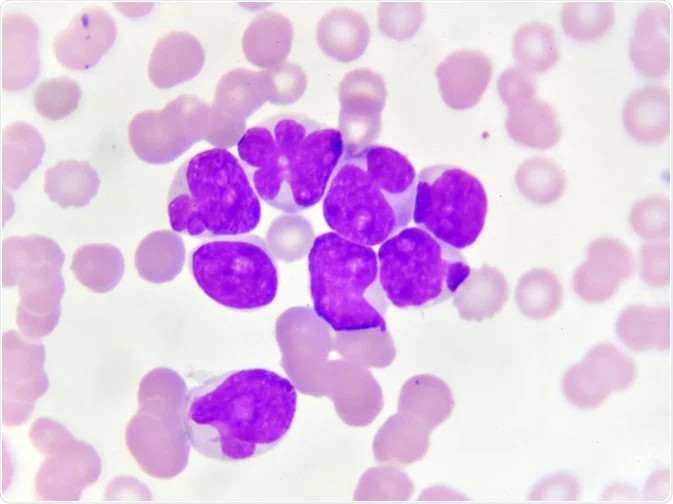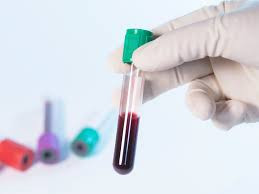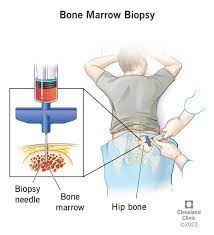Definition
Acute leukemia is a cancer that begins in stem cells (cells that would normally develop into different types of blood cells). The word acute means that the cancer grows quickly and is aggressive, so acute leukemia usually requires immediate treatment.
Leukemia is categorized into different types, primarily based on the growth rate (acute or chronic) and the origin of the abnormal cells (myeloid or lymphoid). Identifying the specific type of leukemia is crucial for predicting prognosis and determining the most appropriate treatment.
There are two main types of acute leukemia:
- Acute lymphocytic leukemia (ALL) originates in precursor cells of lymphocytes, which are white blood cells essential for the immune system. Approximately 80% of leukemia cases in children are ALL.
- Acute myeloid leukemia (AML) AML begins in early myeloid precursor cells, which are responsible for developing into various white blood cells other than lymphocytes, red blood cells, and platelets. It is the most common type of leukemia in older adults.
Read more: Leukemia In Children - Definition, Causes, Symptoms, and Management
Causes
AML and ALL develop when DNA mutations cause the bone marrow to produce excessive abnormal lymphocytes. However, the precise cause of these mutations remains unknown.
Risk factor
Risk factors for ALL:
- Being male, white, and over 70 years old
- Smoking
- Family history of ALL
- History of chemotherapy or radiation exposure
- History of exposure to benzene
- Certain genetic conditions
Risk factors for AML:
- Being male
- Smoking
- History of blood disorders such as myelodysplastic syndrome
- History of chemotherapy or radiation exposure
- History of exposure to carcinogenic substances such as benzene and formaldehyde
Symptoms
The common symptoms of AML and ALL are similar and may overlap with those of other conditions. These symptoms include:
- Weight loss
- Fever
- Night sweats
- Loss of appetite
- Fatigue (AML)
In both types of leukemia (AML and ALL), reduced levels of normal white blood cells, red blood cells, and platelets are common. This can result in specific symptoms. For example, a deficiency of red blood cells (anemia) may lead to:
- Feelings of tiredness
- Weakness
- Dizziness or lightheadedness
- Pale skin
- Shortness of breath
If you have too few normal white blood cells, you may experience repeated or frequent infections and fevers. Unlike normal white blood cells, those affected by leukemia do not protect the body from infections effectively, even when white blood cell counts are high.
Platelets are small blood cells crucial for clotting and preventing bleeding. Low platelet counts can lead to:
- Bruising or small purplish-red spots on the skin
- Frequent or heavy bleeding, including nosebleeds, bleeding gums, and excessive menstrual bleeding in women
Diagnosis
If you display ALL or AML symptoms, the doctor typically begins with blood tests and a bone marrow examination. Blood tests provide valuable insights into the levels of white blood cells, red blood cells, and platelets in your bloodstream and indicate any abnormalities.
A bone marrow examination is crucial for confirming the diagnosis of leukemia. During this procedure, a sample of bone marrow is extracted from the pelvic bone or breastbone using a needle. This sample is then examined under a microscope to identify any leukemia cells.
Furthermore, if AML or ALL is suspected, the doctor will conduct additional tests to analyze specific genetic and chromosomal changes in the leukemia cells. This information is essential for tailoring the treatment plan and assessing the prognosis.
In cases of AML, additional testing, such as a lumbar puncture, may be necessary. This procedure involves inserting a needle into the spinal canal to collect cerebrospinal fluid, which is then examined for leukemia cells.
Management
In general, treatment for AML and ALL typically involves two main stages:
- Induction therapy: This initial phase eliminates most leukemia cells from the bloodstream and bone marrow. By doing so, the body can restore the production of healthy blood cells.
- Consolidation therapy (post-remission therapy): Following successful induction therapy, consolidation therapy aims to eradicate any residual leukemia cells that may remain in other areas of the body, such as the brain and spinal cord.
Maintenance therapy may be prescribed for individuals with ALL or specific AML types to deter leukemia cells' resurgence. This ongoing treatment involves the administration of low doses of medication over an extended duration. Additionally, doctors may inject chemotherapy drugs directly into the spinal cord to target cancer cells in the nervous system.
Therapy methods for ALL and certain types of AML encompass several approaches:
- Chemotherapy: Administration of drugs to eliminate cancer cells. Hospitalization may be necessary during treatment.
- Targeted therapy: Drugs that target specific cancer cells hinder their growth.
- Bone marrow transplantation involves Replacing diseased bone marrow with healthy stem cells, facilitating the regeneration of normal marrow function.
- Radiation therapy: Utilization of high-dose radiation to eradicate cancer cells.
- CAR T-cell therapy is a genetic therapy sometimes employed to treat ALL in children and adults. It involves modifying immune cells to recognize and destroy cancer cells.
Complications
A weakened immune system is a primary concern in AML and ALL. A shortage of healthy white blood cells makes it challenging for the body to combat infections. This immune compromise can result from the disease and certain leukemia treatments.
Low platelet levels can lead to easy bruising and bleeding, with the potential for serious bleeding in critical areas such as the skull, lungs, and stomach. If you suspect internal bleeding, it's crucial to seek emergency medical attention promptly.
Many leukemia therapies, including chemotherapy and radiation, can also impact fertility. While infertility may be temporary in some cases, it can also be permanent, particularly after high-dose treatments. If fertility preservation is a concern, discussing options with your healthcare team before starting treatment is advisable.
Prevention
Preventing acute leukemia is not currently possible since the exact triggers for the genetic mutations that cause it are not fully understood. However, certain risk factors have been identified that may increase the likelihood of developing acute leukemia.
Some modifiable risk factors include:
- Smoking: Quitting smoking and minimizing exposure to secondhand smoke can reduce your risk.
- Avoiding carcinogens: Minimize exposure to substances like benzene and formaldehyde, commonly found in certain occupational settings or environmental pollutants, by following safety guidelines and using protective equipment.
When to see a doctor?
If you or your child experience symptoms of acute leukemia, reach out to your doctor. While these symptoms are probably not due to leukemia, it is important to have them checked.
Looking for more information about other diseases? Click here!
- dr. Monica Salim
Leukemia: All vs. AML (2021) WebMD. WebMD. Available at: https://www.webmd.com/cancer/lymphoma/leukemia-all-vs-aml (Accessed: April 14, 2023).
Types of leukemia: Common, Rare & more (2022) Cancer Treatment Centers of America. Available at: https://www.cancercenter.com/cancer-types/leukemia/types (Accessed: April 14, 2023).
AML vs. all: Differences in symptoms, diagnosis, and survival (2021) Medical News Today. MediLexicon International. Available at: https://www.medicalnewstoday.com/articles/aml-vs-all (Accessed: April 14, 2023).










